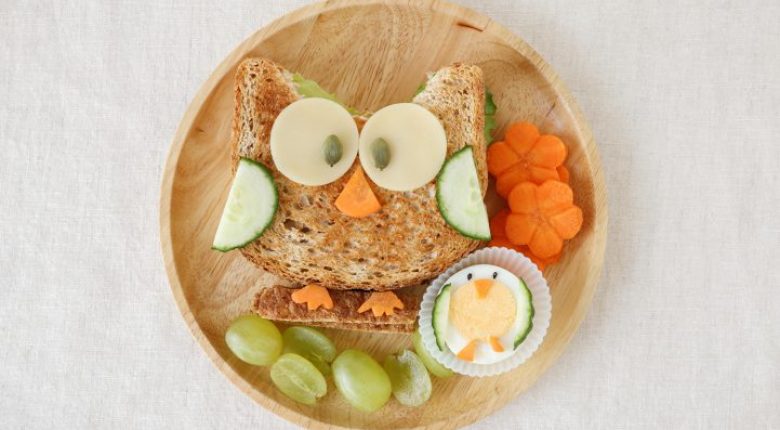With the help of our tips, even very young children can be involved when it’s time to get cooking.
Cooking and eating can be a source of great joy but also frustration, especially when the little ones are involved. We’ll provide you with some inspiration to help ensure, above all, that children enjoy eating and take pleasure in food.
One of them always leaves the peas, the other will eat spaghetti but nothing else. It’s true, meals with children are not always easy. But why is this, and how can you communicate pleasure and enjoyment of food to your children? We have compiled some information and hopefully something to get you inspired. Cooking with kids will be an absolute pleasure.
Pudding or broccoli? No contest!
What do you think your child would choose, pudding or broccoli? They would definitely prefer pudding – you either know this from experience or think so intuitively. This is because a preference for sweet foods is innate, and that’s a good thing. A sweet taste is an indication of sugar: a sign of ripeness and a supplier of energy. A sour taste, on the other hand, indicates spoilage, while a bitter taste is an indication of toxins. Sour and bitter tastes are therefore intuitively rejected.
The colour green signals to the brain: caution, unripe, not edible! This is why young children will clearly prefer sweet pudding to green broccoli. This reflects pure survival instinct. However, in today’s affluent society, where safe, hazard-free food is available in abundance, it is important that our offspring learn to love healthy greens from an early age. Sweet, energy-rich foods are no longer a rarity nowadays, but can lead to obesity and have therefore become more “dangerous” in the long term.
A different way of serving raw food, so that even children will become fans

So how can you make less popular, but healthier foods more appealing? Carved fruit or vegetables are a great idea. Halved apples or kiwi fruit, with grapes attached by cocktail sticks to represent a head and feet, quickly become cuddly fruit turtles. Even the smallest children can help with the preparation. There are no limits to creativity here – the plate is your canvas. The more cheerful the result looks, the more delicious it will be to both young and old – after all, you do eat with your eyes.
A simple yet effective idea is to place raw vegetables on the plate so that they look like a happy face: a row of cucumber slices grins at us, carrot sticks are arranged into a wild hairstyle and two small bowls with herbal cream cheese and a cocktail tomato in the middle represent the eyes. Some internet research on raw food suitable for kids is sure to stimulate your creativity even further.
Awaken the joy of discovery
However, children first have to learn and experience that broccoli, kohlrabi and the like are not dangerous and can even be delicious. So, what can be done about innate neophobia (rejection of the new or unknown)?
- A positive role model: show your children how much you like healthy greens yourself.
- Take your time: getting used to new food takes time. Researchers assume that a new thing must first be tried ten times before it is accepted. By the way, the “mere exposure” effect (i.e., repeated experience) also applies to foodstuffs and dishes. The more familiar they are, the greater the acceptance.
- Get to know your senses: enjoyment requires all the senses – and that takes practice. We have compiled some suggestions in the next section.
See, taste, smell, feel, hear – and get to know the world of food
Enjoyment of food is not restricted to tasting: all the senses play a role. If your children are already helping you in the preparation of food, then actively encourage them to deliberately touch the products, try them at all stages of preparation, and use their nose and ears. Ask questions and make suggestions to start with. What does an apple feel like? Smooth? What about a kiwi fruit? Velvety and a little rough? What does rice sound like when you pour it into a cup? Like rain tapping on the roof?
Putting sensory experiences into words and going beyond the basic “it tastes good/ bad” helps to promote a conscious approach to food. Sensory games also help cooking with kids: fill opaque containers with different foods. The children now must find out what is in there by smelling it. Please note: it should be clearly communicated that food is not a toy, but should be treated with respect. The food you use for this can then be eaten in subsequent meals.
Little helpers: with you from the start

Even the youngest children can take part in cooking every evening. As a start to their career in cooking, kids can take on tasks such as adding flour to the dough and stirring. This means they are actively involved in the preparation of the food and will be more likely to accept the food afterwards.
They also have to experience and learn that carrots do not grow in the supermarket. How our food is produced can also be conveyed at home – and you don’t necessarily need a large garden or balcony. The old favourite, cress can even be planted on a sunny windowsill. Even more impressive, of course, are potatoes, which seem to multiply almost magically even on a balcony, or tomatoes, which suddenly appear on a green plant in a raised bed. If children can follow how our food is produced from the very beginning, they develop a completely different relationship to food compared with having a ready meal placed in front of them every evening.
“I’m the chef today!”
Just hand over the wooden spoon – if your child clearly enjoys cooking, then give him or her responsibility for cooking tonight. Perhaps your offspring already has his or her own idea of what will end up on the plate? Give your child a free rein and help if necessary. For example, your instruction or help will be needed when handling sharp objects or the hot stove. Therefore, do not leave your child unattended in the kitchen. Our easy-to-modify recipe idea which requires only three ingredients is vegetable soup. The main ingredients are onions, potatoes and another vegetable of your choice. Your child can choose the vegetable to suit their taste – carrots, broccoli, pumpkin, cauliflower or leek, whether frozen or fresh: there are many possibilities.
The ingredients only need to be cut roughly, as everything will be blended anyway after being cooked. This means your children won’t get frustrated quickly. Sauté the diced onion in oil or butter, add the sliced vegetables and pour in some vegetable stock. Depending on the vegetables, it takes about 15 – 25 minutes to cook. Blend (caution: danger of splashing), refine with seasoning and, if necessary, a dash of cream, crème fraiche or cream cheese. The result: your own home-cooked dish that the whole family can enjoy.
And don’t forget, to preserve all your ingredients before cooking with kids, think of the BioFresh technology.
Also, discover our tips to save energy while cooking with kids.
